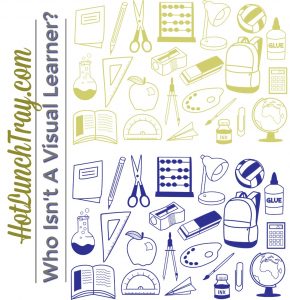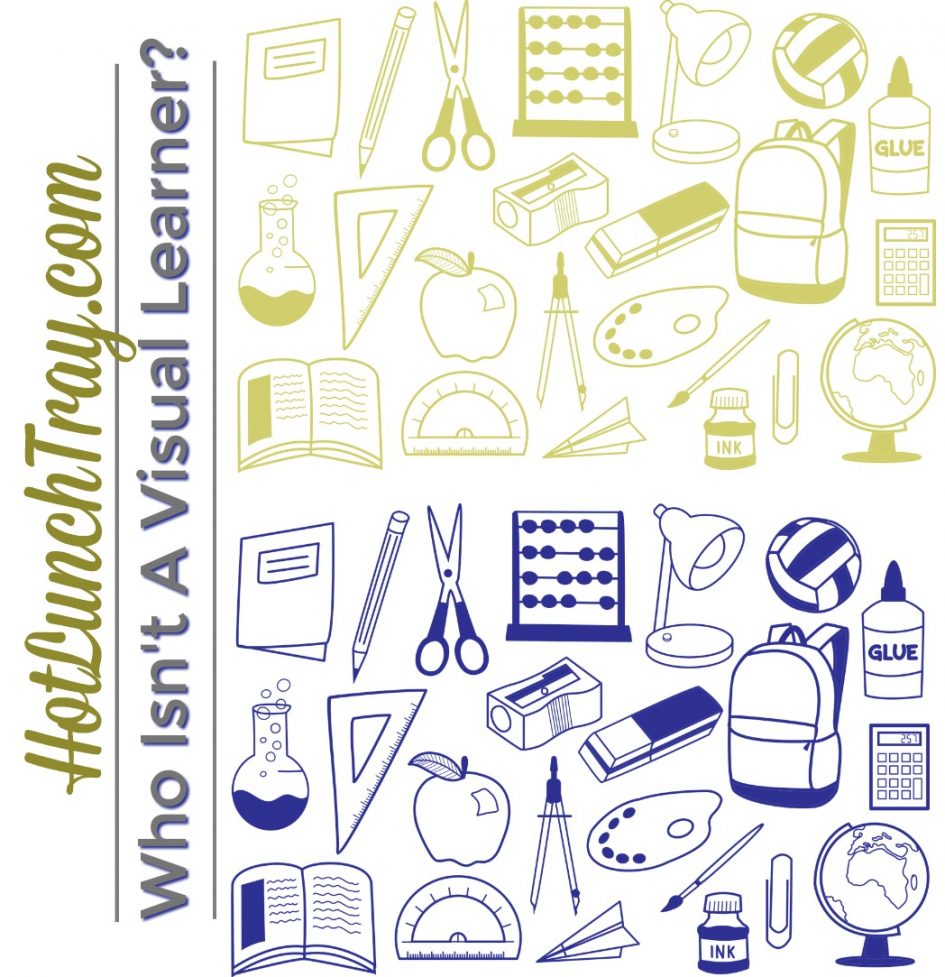Have you heard the statement: “I am a visual learner.” Have you heard it less than a million times?
Oh. My. Have you said it? Surely not more than a million … nevermind.
There are all types of learning theories about how people {not just children, but people} learn and they all agree that there exists a multitude of ways to bring in new knowledge. There are a variety of ways of incorporating new information, or learn. Most often people use a variety of learning styles to attach new information to current information they hold.
So, if someone says “I am a visual learner, ” what is going on?
What does that mean?
In the best case, this person has identified a strong way in which they can take in information. At worst, they are asking others to take something complex and do the thinking for them, turning it into a simple graphic for them to easier take it in. In truth most people saying that are likely somewhere in the middle, they find taking in visual information easier, but also would like it if someone else turned the tough concepts into pictures for them.
Consider the work it takes to read a book without pictures and how strong the visual image is which your create of the characters, setting, and events. Sometimes so much so that you may not be pleased a the movie version or new illustrations of the book. Turn thoughts, ideas, and descriptions into pictures requires work and that work is what attaches itself to your existing knowledge.
What are they saying?
These people are aware that there are ways they understand a retain knowledge and other ways that they do not. These people are telling you they have a preference, and they have identified it as a preference for visuals.
A good teacher can break learning down into small enough intervals and insert chance for people to create their own pictures as they learn. To “save” people the work of creating their own images is not only a shortcut, but a short-change to the learner. But consider that a good teacher would not make everything visual for a learner, there is value in learning with other modalities.
How are others to respond?
Sometimes when I hear people say that I feel like they are asking me to do the thinking instead of them. It could also be a stall tactic in a conversation, deferring a decision, asking for someone to spend more time or thought on a topic before they accept the new information.
I hope that everyone acquires an idea of how they like to receive new information. Anyone teaching does have to offer a variety of modalities, but just as one would never exclude visuals, one cannot exclusively teach with them.
When should you push back and ask the learner to create his/her own visuals from another source?
In truth, everyone should be able to process information visually {obvs exceptions excluded}. Maybe a better question is – who isn’t a visual learner?
And even though we are all visual learners, we can all learn in various ways. Don’t use this as a crutch and hopefully you can lead others to a great variety of shared thought and learning.






2018-01-10 at 9:16 pm
Understanding learning styles is so important in school, work and family.
2018-01-11 at 6:16 am
I love breaking down learning and know that you are reaching more than one type of learner in each lesson is so important.
2018-01-11 at 6:29 pm
There was so many different ways of teaching and learning it can be overwhelming. They always say the best way to fully understand and learn something yourself is to teach it, because in order to teach in all different styles you need to fully understand the content yourself. Nice post.
2018-01-11 at 8:07 pm
I think its important to teach people in all different ways of learning 🙂
2018-01-11 at 10:27 pm
I always have a hard time explaining my reasoning so I draw pictures. I guess I would be a visual teacher! 🙂 Nice post!
2018-01-11 at 10:47 pm
I can only learn hands-on and with visuals!!
Lauren
2018-01-11 at 11:00 pm
People do have different learning styles and a teacher’s duty is to reach all kids in ways that foster learning. We might all be visual but we also have other traits that aid our learning.
2018-01-11 at 11:38 pm
This is an interesting perspective! I think I learn different things better different ways so I always appreciate when information is presented in multiple formats so I can best soak it in.
2018-01-12 at 12:41 am
I believe there are many different ways to learn so it can be hard for all types of learners to be reached in the most ideal way for them. If teachers can try more than one way to get their point across, that is beneficial, but I’m sure there isn’t always time for that. I’m sure this is overwhelming to teachers. I know that I learn best a certain way, but that doesn’t mean I can’t learn other ways, it may just take me longer to learn the other ways. Very interesting post.
2018-01-12 at 7:53 am
I think it’s so interesting how everyone is different when it comes to learning. There are many learning styles and certain styles seem to work better for some than others. I am a hands-on type person. This is a very interesting read. 🙂